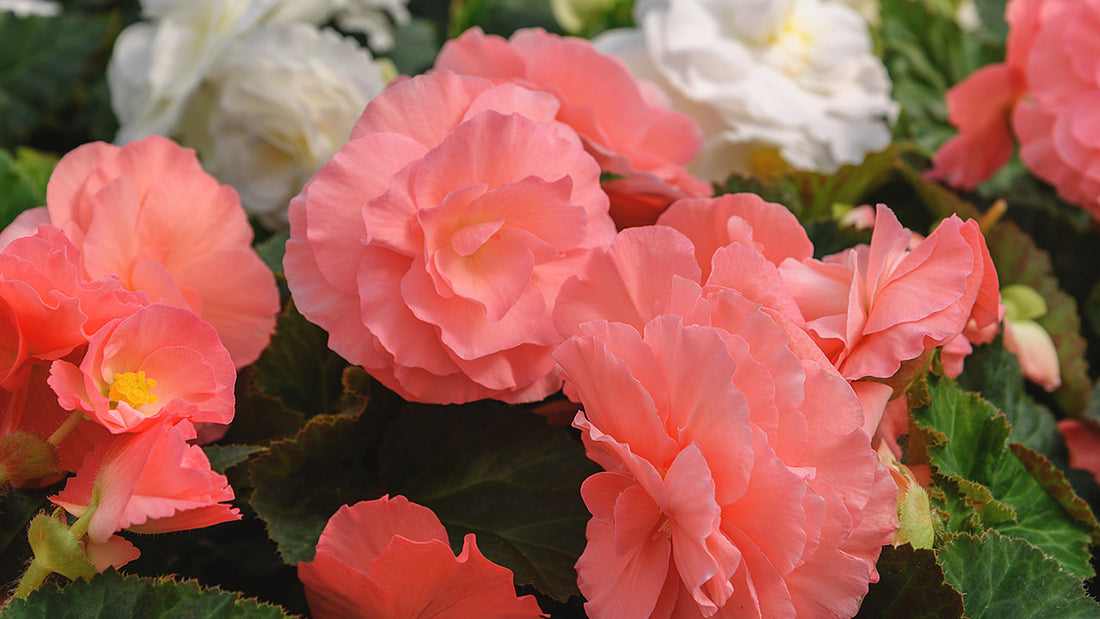Begonias are a wonderful plant to put in a shady part of your yard or deck. Some varieties look great in a hanging pot with flowers cascading over the edge. Grown as perennials in zones 9 & 10 and in zone 8 and lower, they make nice annuals.
Start Ahead Indoors in Zones 3-8
Begonias can be started ahead indoors about 8-12 weeks before the last frost and transplanted outdoors when it is warm enough. They can be potted up in soil and kept warm (about 70°F), provided with indirect light or use a grow light. Do not water directly on the tuber as it is very susceptible to stem and root rot. Rather water around the tuber and allow the soil to dry out between watering.
Planting Begonias Outdoors
Light–put in a shady spot in very hot regions. In cooler regions they can handle morning sun or in a spot that gets dappled bright light.
Soil–put in fertile, well-drained soil. If your soils are heavy, you can amend them with perlite or pumice to help with drainage. The tubers should not be planted in wet or soggy areas, or else they will rot.
Timing–in colder zones, start ahead indoors as described above. In warmer zones (9 and above), plant them after all danger of frost has passed and the nighttime temps reliably stay over 45°F.
Staking–upright begonias are the only variety that needs to be staked. Put a small stake near the tuber, being careful not to damage the tuber with the stake. Our 2' bamboo are good stakes to use. Tie the stems loosely with twine, careful not to break the stems as they can be rather brittle.
Water–do not overwater and only water around the tuber and not on top of the tuber as that can lead to rot. Drip irrigation is a great way to water your begonias if summer rain is not present.
Fertilizing–begonias are heavy feeders. Before planting amend the soil with a quality fertilizer that is for blooms. Plants in containers can be fed about once a month.
Mulch–in very hot areas, mulching can help conserve water. Just make sure not to apply it close to the stems, this can cause rot. In regions with summer rains you do not need to mulch.
Pruning–remove spent flowers to encourage more flower production throughout the summer.

Lifting Begonias in the Fall
In zones 3-8, begonia tubers should be lifted or the pots brought indoors in the winter.
- Lift after the leaves start to yellow or the temps drop below 45°F at night.
- Cut back the dead top growth
- Knock off most of the soil from the tuber, leaving just a little on the roots
- Let the tubers dry (not in direct sun) for about 1 week
- Store in sand or in a paper bag, making sure the tubers stay dry.

